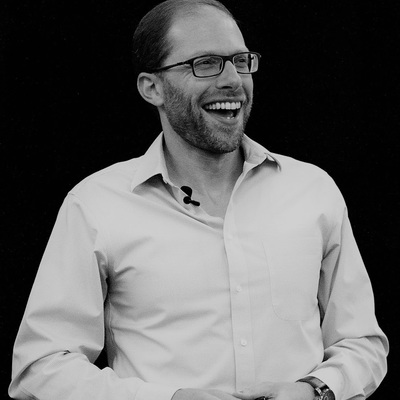Knowing how to give and get feedback in an office setting is hard. Our brains are built to either fight back or run away when we get feedback. So, how do we make each other better without going through a fear-inducing ritual every quarter?
Joe Hirsch has made a career out of helping managers understand the science and art of feedback. And in all his research about how to get feedback right, he found that it’s really not about the quarterly or annual feedback at all. It’s all about trust and relationships.
What we learned from this episode
-How we got to fear and loathing around feedback
-Why time lapse is a big problem with feedback
-How Joe took Marshall Goldsmith’s idea of feedforward and developed it
-The difference between “got ya” feedback and “gotcha” feedback
-How feedback is rooted in emotional intelligence
What you can do right now
-Feedback often deals with the presenting problem, but we should focus on underlying issues as well
-Feedback is more than just what happens behind closed doors; it can be public too
-Don’t stress about your feedback forms; focus on building a great relationship first
Key quotes
“Most of the feedback that is given out today, is a deficit based feedback, focusing on our weaknesses, not our strengths.”
“But the more impactful feedback is happening all the time, not just some of the time.”
“Even thought feedback is a driver of many of the traumas that we have at work, it isn’t the cause, necessarily. To me, the cause comes down to trust and it comes down to communication.”
Links mentioned
Today, our guest is Joe Hirsch. He’s the managing director Semaca Partners, a TEDx and keynote speaker, and the author of the book “The Feedback Fix.” This episode is called Work Minus Feedback Drama. Hi, Joe. How are you doing?
How you doing, Neil?
I’m doing excellent. I am really excited to talk with you because you focus on a very, very specific aspect of work. We’re talking about feedback and why we’re so afraid of it. But why don’t you start off just giving us a little bit of your background and how you got into this?
Sure. Well, I’m so glad to be with you and your listeners. My mission is to fix the way we work at work. And I try to do that from the stage, whether that’s the TEDx or a keynote stage, in print through the work that I do for Inc. and as a contributing writer for The Wall Street Journal, and then with teams, working with teams ranging from smaller teams to larger teams, companies like The Bill and Melinda Gates Foundation or Farm Bureau Insurance or with executive teams in the manufacturing, healthcare, and financial services industries. To me, it’s all about helping people do better work by unburdening them of this drama that we call feedback. And so often the case, feedback is a source of fear, not joy. And my mission is to try to help people change that.
In your book, you describe our relationship to feedback with what you call fear and loathing. So, either you’re afraid of it or you hate it. So, walk us through that. How did we get to the point where talking to another human about the work they’re doing became such a horribly negative experience?
So, I guess on the fear side, it starts really deep, and it goes back a long way. Anytime that our status is challenged, or our safety is threatened, we as human beings signal a threat response, we go into threat detection mode, we go into survival mode. So, thousands of years ago, that might be a saber toothed tiger chasing you. Today, it’s an HR manager or some performance review that is causing you that source of stress. And it indeed is a source of stress. If you look at brain scans of people whose status is challenged or safety is threatened, there’s a spike in cortisol, which is the stress inducing hormone that the brain produces every single time our status is challenged or our safety is questioned. And when that happens, it triggers one of three really hard-pressed responses. Fight, we become oppositional, we become defiant. So, if you think about most feedback encounters or performance review encounters, that is exactly what happens. It’s a he said, she said, it’s a battle between you and a manager, a battle which you will never win, by the way. There’s the flight, we will run from that feedback encounter or try to avoid it. This, by the way, holds just as true for feedback givers as it does for receivers.
Or we’ll freeze, we’ll get that deer in the headlights phenomenon where we literally go into analysis paralysis, where the parts of our brains that are responsible for creativity, for executive function, the parts of our brains, Neil, that make us, us, those parts go dark, every single time the brain is flooded with toxic stress. So, that’s the fear side. As for loathing, well, most of the feedback that is given out today, is a deficit based feedback, focusing on our weaknesses, not our strengths. And in addition to that, the format just breeds all kinds of problems, whether that’s the bias that is inherent in so many feedback conversations, raters report feeling like they aren’t able to really accurately assess the situation, receivers feel the same way. And most of that has to do with a time lapse that exists between the time that feedback is given and the events that it describes, which can sometimes be weeks, maybe even months in a quarter system. And so, for all those reasons, the toxic stress, the feeling like we’re being judged, the time lapse, all of that leaves people feeling broken, and not whole.
So, everyone hates feedback. So, why don’t we just get rid of it altogether?
I wish we could do that. But we can’t. People also need to grow. And we still need feedback to engineer that growth process. The problem isn’t so much the message. The problem is the mindset. And that’s what I’ve proposed in my book, “The Feedback Fix,” where I talk about the power of feedforward, this strengths based approach that’s research backed and focused on a new view of human performance and potential, not so much who people were, but who they are, and more importantly, who they are becoming.
So, let’s go deeper into this idea of feedforward, which I think was Marshall Goldsmith the first one to say that or does it go back even before him?
So, Marshall introduced the concept of feedforward more as an ice breaking tool where people in large meetings would ask each other for advice on things they could do to improve. And the goal would be to ask as many people as you can for this advice in a specific amount of time. When I came across that concept, I said there’s a lot to this model. And I wonder if there’s a science backed approach to it, the scientific underpinnings of communication and trust. So, with Marshall’s blessing and later his support in the form of the foreword for the book, I started to unpack the dimensions of feedforward, trying to figure out exactly what drives this process on a scientific level, and then to look very specifically at practical, proven ways that leaders can put it into action.
You mentioned science-backed a lot of times. So, walk us through some of that research that you’ve gone through.
So, the major areas of impact on the science side have to do with the way we communicate and the way we trust. When it comes to communication, individuals are generally averse to having conversations when they feel that they are in deficit mode. But when they’re in strength mode, when the sense of strength is activated, something called appreciative inquiry, that is when people tend to be more open about their progress, acknowledge their areas of improvement, and be more inclined to actually work together with others on making powerful positive changes in those areas. On the trust side, there’s a lot that has been written and done in the area of performance partnerships, where instead of focusing on the individual in front of you, working together, manager and employee, to develop a much more shared view or shared understanding of success, rather than just run through a litany of what this individual has or has not done. So, in that process, it builds trust because the people receiving feedback understand that they’re not in it alone, they are able to trace back the people and events that enabled their success. And ultimately, they’re doing all of this with the guiding hand or a manager who’s not out to get them but to support them, the difference between what I call “got ya” or “gotcha”. Either I got you here, I just got you now, I got you again with another one of these reviews, or I gotcha, I really have your back. And that difference between feeling judged and feeling supported is the difference between being able to be your full self at work and be totally honest and authentic about your challenges and opportunities or not.
So, you’re saying the first step in fixing feedback is really that personal relationship, that the person you’re interacting with you have a trust built with them already.
Absolutely. And ultimately, feedback is about relationships. It’s not about reports. Because we tend to trust the people that we believe care about us and care for our wellbeing. So, if we have that courage to make that first step as managers to go ahead and to show others that we are there to support them, not just to chastise them, then that makes a huge difference in the whole delivery of feedback. But it’s not just about the intent, it also has to be the practice. And that’s where with the art and science of feedforward, I try to spell out for people practical ways they can actually do this, and specifying six dimensions of it, and then the three impact areas.
Let’s walk through those. I have somebody on my team, we have a good relationship, there’s a lot of trust between us, either they’re performing well or they’re not performing well. How do I enter into those conversations? First, let’s just talk about time frequency, how often do you recommend having a formal conversation about performance and feedback?
I think the trick is to move it out of the realm of formality and into the realm of just in time. In a formality means that it’s happening only once a quarter or maybe at the end of every project. And that’s helpful. Of course. I’m not saying that shouldn’t happen. But the more impactful feedback is happening all the time, not just some of the time. And to do that means moving towards, for some companies that I’ve worked with, a check in model where they’re having these conversations weekly, more casually, not in an office, but sometimes out in the open, so that people feel like it’s more of a conversation than a review. For others, it has to do with the nature of the kind of feedback that they’re given. So, instead of it being retrospective at the end of a project or at the end of a quarter, it’s focused more on career and capacity, the work you’re doing right now and the strengths that you bring, and then maybe the contributions, what can I as your manager do to support that. And Neil, really, to me, there’s six areas, I would say, underpinnings or dimensions that drive this process. We talked about at the beginning that feedback being a broken system. So, to me, if it’s broken, you have to fix it, you have to repair it. And that acronym of repair is the way I see feedforward playing out in everyday conversations. Can we take a quick look at that?
Yeah. Let’s do it. Start with R.
So, the first one has to do with reframing these conversations from a deficit model to a strengths model. E is for expanding possibilities and creativity. Instead of shutting people down with closed communication, closed language, we open them up with the kind of language that sparks their creativity and keep ideas in play drive the idea count up and not down. P is for particular feedback again, not throwing the kitchen sink. A is for actionable where it has to actually, authentic where it has a real impact on real clear, candid conversation. That leaves the I, impact based, where once people have a clear sense of what they’re doing and can actually talk openly about these issues, it can lead to real positive change. Which finally brings us to R, refining these dynamics pushing managers and their teams. Rather than looking at this as something hierarchal becomes something more partnership driven. So, all six of those dimensions, repair, contribute to a better understanding of who this person is, the work that he or she is doing, honestly approaching the issues with care, and then working together and allowing the other person, the receiver of that feedback have more voice and choice in the process itself of what should happen next.
So, I’m pulling from this as I’m giving feedback to other people, one, I shouldn’t just think about feedback as what happens behind a closed door when it’s just me and somebody else. It’s beyond what happens on a report that needs to have some amount of spontaneity in terms of when it happens, do it live, but then also record it in these ways. Let’s dig deeper into this idea about actionable. I want to talk about how we can really make that feedback in a positive way, especially if somebody’s struggling with their performance. What are some ways we can help them with the actionable insights?
So, I recommend that leaders try something that I call wrap approach instead of a praise sandwich. Praise sandwiches are the default for giving feedback when you have some difficult news that you want to share with someone or there’s a challenge at work. And the problem with the praise sandwich isn’t the praise. Praise is good. Praise is a driver and a motivator. The problem is the sandwich. When people get praise sandwiches, they’re basically manipulating people with fake information. Now, I’m not saying that all the praise is insincere, though, oftentimes it is. But let’s say you and I were having a conversation about something that happened recently at work, Neil. And I say to you, Neil, you’re a great guy, you’re one of our top people, praise. But the way you spoke at that last meeting was really domineering and cut a lot of people off. That really has to change. But you’re such a valuable member of our team, I know it’s going to be fine. So scientifically, you know what you hear? You hear the two ends of that sandwich, you hear that you’re a top performer and that you’re a valuable member of the team.
The part in the middle, the part that really needed to be delivered, that you’re talking over people at the meeting earlier today, that part was completely ignored. Now, neither you as the person who owns that issue, or me, the person who owns the delivery of that issue, has really done their job. Because you walk out of that meeting thinking, I’m a top performer, I’m a valuable member of the team. And I as your boss, I feel pretty good that I’ve checked the box for feedback, but I haven’t really done anything. So, that drama is going to persist. With a wrap approach, you focus much more as the person giving the feedback on having authentic conversations focused on what and where, that’s the W, the reason for why I want to have the conversation, that’s the R, the affects behind all of it, the emotions that it causes, that’s the A, and then the P, the prompts, what can you, Neil, as the person who owns the problem, do to really make positive and productive changes in the situation. That comes from you, not from me.
And so, when you give a wrap approach, you’re having authentic conversations. This is the part of the repair process that focus on authenticity and impact. You’re having authentic conversations that are candid, that are caring because I’m telling you exactly what’s happening and where it’s happening. So, there’s no guessing, there’s no kitchen sink, there’s no threat response, which is typically what happens when you get feedback, it’s a catch all. And when you try to catch everything, you end up getting nothing. When you focus on the affects and the impact that it’s having on others, you’re moving it out of the realm of judgment, and into the realm of emotions. It’s becoming something that is no longer very subjective, but rather personal for me. If I say you’ve done something wrong, and you are coming up short, now we’re back to threat and judgment. But if I say, I feel badly for the people at that meeting who didn’t get a chance to share or I sensed some frustration on the part of other people, well, here’s the universal truth, you can argue with what I say, but you can’t contest the way I feel.
Now, if I focus on judgment, then we are locking horns. And it’s going to be a battle, which, frankly, you as the employee will not win. But if it’s focused on emotions, and I don’t mean in like a therapy sense, I mean in terms of the emotional toll of that, well, that’s a non threatening statement. And frankly, it might even provoke some insights. Because we as human beings are woefully unaware of how we show up at work or the impact that our decisions or behaviors have on others. So, I might actually learn something from that conversation. If I’m receiving feedback and I’m hearing about the way I’m showing up, I may now have new insights into what’s happening. But the most important part of that is the prompt. Most feedback ends with prescriptions from the leader, here’s what you need to do now. And it better happen in two weeks when we reconvene. If it’s about a prescription, and that is a process that is owned by the boss, by the manager, well, guess who’s responsible for making that change? Not the boss. It’s the employee. So, the boss can’t own this problem, especially if he or she is dealing with a large team. There’s no way to scale that or just to put out fires all day.
So, instead, you have to activate people’s sense of self, their agency, their capacity for change. And I truly believe this approach acknowledges that individuals are the very best people to solve their own problems with guidance from others because they’re the ones who are closest to the action. We’re the ones who know ourselves best. So, if you can end that conversation with, Neil, so I told you what happened in the meeting, I told you why I thought it was important we talk about it, I described the impact it was having, the effects on me or maybe on others that I noticed. And now I prompt you and I say, well, what can be done about it next? What do you think we should do? One of two things will happen. You’ll either totally deny everything I just said, which rarely happens. But at least now you know you’re dealing with someone who has a problem of deluding. Or there’s other issues underlying that this conversation is not just about a meeting, it’s about an entire makeup of who this person is. Or the more likely scenario, the one that leaders of teams who use this approach often report back to me on is that it actually sparks conversation. It leads to feelings of trust because now employees don’t feel like they’re just being judged. They actually feel like they’re being talked to as people. They feel like they’re given a chance to have a say in the process of change. They welcome the opportunity to be a partner. And all of that changes the dynamic of feedback, one that activates fear to one that activates insights to possibly change and joy.
Yeah, I like that a lot. Because it’s about opening up the possibilities so how do you think we can change this or admitting to those things. So, that’s a great way to reframe it. As you’re talking about this, I’m thinking that feedback is the secondary issue that’s coming through. A lot of it is this emotional intelligence, emotional literacy, understanding what’s going on behind the scenes. So, it really takes a lot of prep work on the manager and the employee side before this conversation to be aware of those things that are around them. Correct?
Yeah, and it’s a tool that I use with leaders and employees to help shape these performance conversations using a coach approach. And coaching is something that is really very rooted in the emotional intelligence domain. But for many managers, they’re scared off by it because they say, well, I’m a technical person, or I rose to this position because of particular skills that were not on the emotional intelligence side, or to use a phrase that I really dislike, the soft skills side, because there’s nothing soft about those skills, those are hard skills to master. But for many managers, they don’t feel adequately prepared or trained in that area. They’re thrust into their roles and very strong on the technical side, but really not as strong on the people side. So, how to have that conversation, some of the very simple things they can do as managers to create a partnership model, that’s a lot of where my work focuses, specifically when I work with leadership teams, how to give more voice and choice and how to focus on employee strengths by driving the conversation forward with ideas that really activate that sense of self, that communicate one’s appreciation for the work that people on the team are doing. And then ultimately take a forward facing view of not just who they are, but who they are becoming.
Joe, I’m interested in your career and how you chose this very niche area of feedback as the place you wanted to spend your career in and focus your efforts. So, how did that happen?
Mostly by accident. I was definitely very bad at receiving feedback for a long time, and ultimately became aware of that issue with a trusted friend who really one day just alerted me to this problem of, hey, you’re really showing up badly to other people. And this was my TED Talk. And this is this moment of realization where I felt, you know what? I need to make this change. And for me, it was the difference in everything that I’ve done since. I started writing about it and researching it. And as I mentioned, I worked with Marshall on developing research backed approach to some of the other work that he was doing in the feedforward domain. As a result of that, feedback has definitely become a major focus of my work, both onstage and in print. Though, I’ve noticed, Neil, that feedback, though, is a driver of many of the traumas that we have at work, it isn’t the cause, necessarily. To me, the cause comes down to trust and it comes down to communication. So, those are the two areas that I work with leaders on most. Feedback is always operating in the background, sometimes even hovering in the front. But as leaders try to work to become better coaches, and ultimately, great leaders are great coaches, I’m trying to help them develop the competencies to do that, to have the confidence and competence to be able to breed that trust. Because ultimately, trust isn’t something you build. It’s something you breed.
People not products. We build products. We don’t build people. People already have those skills. It’s our job to get them to buy in, to build them into something that we think they should be. And so, helping them buy into a view of themselves that maybe they don’t necessarily know or aren’t aware of, that is the job of the leader, to be this mirror holder that enables people to see themselves in a whole new way to appreciate their strengths, and to act on those strengths and bring more of those strengths to work every day. That is the majority of the work that I’m doing now. And I guess it started with “The Feedback Fix” and then from then has really just spawned a number of different initiatives, one of them in the online learning or just in time learning, micro learning, where I’m pushing out new products for leaders to have real time support for a lot of these issues, because I find they’re just way too busy and they don’t want to sit through three-hour workshops. And I mean, some do, but most don’t. They want something that’s quick and can be learned over lunch. So, pushing out those products online has been an area where I’m focused now, continue to work with leaders and their teams, a group of executives in the manufacturing industry, to put out all kinds of really cool products like the tractors that run over fields and things like that. I’ve always wanted, like, hey, at the end of this, can we hop on one of your tractors, I’m like just could we just tear through Middle America.
And then just, I guess, regularly thinking about issues, trying to help people, and some of the other written work that I do for the Wall Street Journal or Inc. But I really believe ultimately that people are the very best agents of their own change and growth. And if we as leaders can activate that sense of potential within our people, to help them feel more of themselves, not less of themselves, then I really do believe that we’re doing our sacred work as leaders, and that is to help people discover a better version of themselves. That is, to me, the job of being a leader versus being a manager. Most people can manage, fewer people can lead. And it takes a sense of courage, but also a sense of humility, to be that kind of leader. And ultimately, it’s acknowledging that we as leaders don’t have all the answers. We have to shift our perspective from being know it alls and problem solvers to learn it alls and listeners. And if we do that, taking that sense of humility, we can actually help people uncover their true selves through this coach approach that focuses on questions and not prescriptions, that focuses on partnership and not hierarchy, that focuses on the future and not the past.
This is great. I like your term sacred work, too, because that’s something we like to focus on here is the element of really getting back to the sacredness of what it means to be a human at work and how we can bring in that approach. I’ve taken a lot away from this conversation in terms of how we coach, how we’re approaching this topic. I think, like you said, feedback is just an entry point for a lot of people because there’s so much fear around it, we want to figure out how to do it better, and it opens up many doors into these things. So, Joe, where can people go to learn more about your book and your other work?
The best place is website, joehirsch.me where you can find all kinds of great ways that maybe we can work together and ways that I hope to support people in the work that they’re doing.
Fantastic. All right, Joe, thanks a lot for being on the show. We look forward to implementing all the insights you gave us.
Thanks so much, Neil.
Joe Hirsch is on a mission to fix the way we work…at work.
As the managing director of Semaca Partners, Joe specializes in helping organizations apply behavioral science to strengthen the way leaders train, support and empower their teams for success.
An award-winning educational leader and researcher, Joe has earned accolades from Fortune 500 executives to NFL coaches for his forward-thinking approach to improving organizational culture and effectiveness. Described by Wharton professor Adam Grant as “breath of fresh air,” Joe makes research-based practices more accessible to improve the way people work, learn and lead. (Yes, he’s putting that shiny Ph.D. to good use.)
In The Feedback Fix, Joe presents a bold alternative to traditional feedback techniques and performance management practices. He’s shared that message as a TEDx and keynote speaker with executives at Deloitte, GameStop, the Bill & Melinda Gates Foundation, members of the U.S. armed forces, and close to 10,000 others across two continents.
When Joe isn’t on stage or writing for publications like Inc. and The Wall Street Journal, he’s probably doing something outdoors with his wife and four boys.












